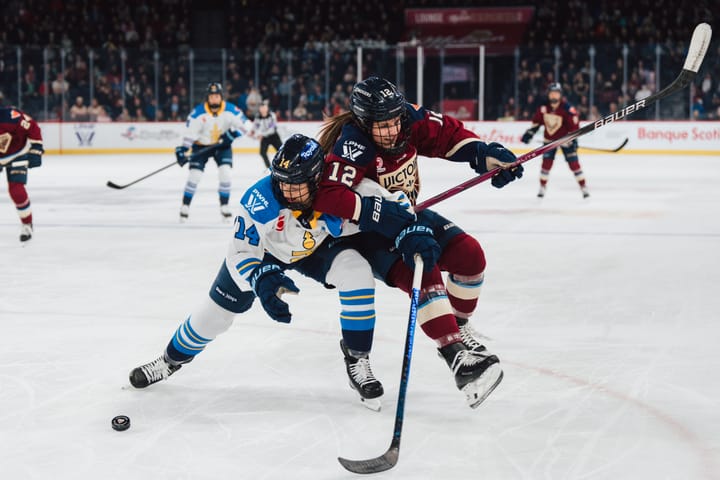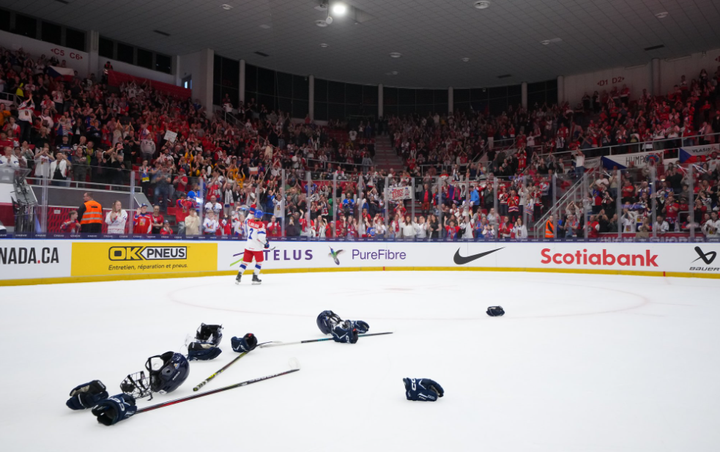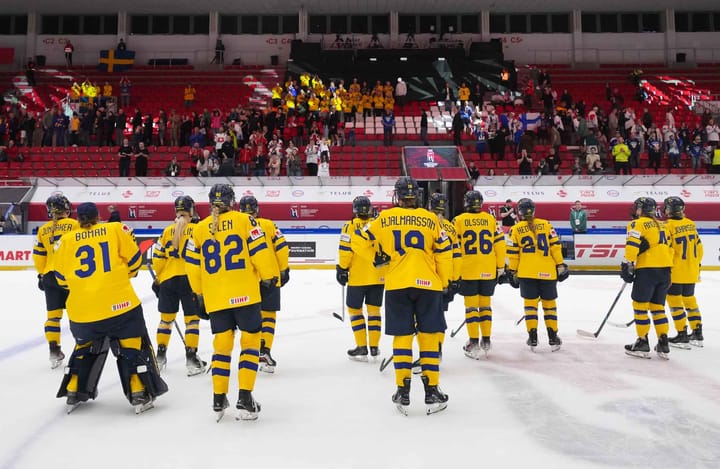The Takeaway: End of the decade edition
A look back at some of the best teams, games, and moments from the 2010s in Division I women’s hockey
As the decade comes to a close, I thought it’d be fun to spend this edition of The Takeaway looking back at the past 10 years in NCAA Division I women’s hockey. I’ve narrowed down 10 years’ worth of happenings into five arbitrary categories, and selected my personal favorites for each. Which is to say: none of this is definitive, and is all purely my opinion.
There are sure to be moments and games and important things that I’m forgetting, so please share your favorites if they’re not listed below!
Best Team
There’s little doubt that this honor belongs to the 2012-13 Minnesota Golden Gophers, the only undefeated team in NCAA Division I women’s hockey history. The Gophers went a perfect 41-0-0 on the year, repeating as national champions with a 6-3 win over Boston University. Minnesota’s trio of Amanda Kessel, Noora Räty, and Megan Bozek were named Patty Kazmaier Memorial Award Top-3 Finalists. Kessel won the award after posting 101 points on the year. Minnesota pushed its record unbeaten streak into the following season, ending at 62 games, making it the longest winning streak in the history of college hockey.
A nod is in order for some other really great teams from this decade. The 2010-11 national champion Badgers had a behemoth of a roster. Their forward group consisted of Patty Kazmaier winner and 87-point-scorer Meghan Duggan, 47-goal-scorer Hilary Knight, Brianna Decker, Carolyne Prévost, Brooke Ammerman, and Brittany Ammerman (to name a few). Alex Rigsby was their starting netminder.
Then there are the Cornell teams from the beginning of the decade. For the sake of keeping this at a reasonable length, I’ll narrow it down to one: the 2011-12 Big Red. They reached the Frozen Four with a team that consisted of Brianne Jenner, Rebecca Johnston, Jillian Saulnier, Lauriane Rougeau, Laura Fortino, Hayleigh Cudmore, Alyssa Gagliardi, Emily Fulton, and Amanda Mazzotta. For second-half-of-the-decade nominations, BC’s 2015-16 squad and Clarkson’s 2016-17 squad are both deserving of heavy consideration.
Best Game
I don’t want to say that there’s a runaway winner for this category; I’ll just say that I’ve been waiting seven long years to experience such a rollercoaster as the BU-Cornell 2012 NCAA quarterfinal game, and I’ve grudgingly accepted that I never will again. This game had everything. The talent squaring off here was just incredible; you’ve already seen the names on Cornell’s roster above. BU’s lineup featured Jenn Wakefield, Marie-Philip Poulin, Isabel Menard, Kayla Tutino, Tara Watchorn, and Kaleigh Fratkin.
The Terriers grabbed a 3-0 lead in the first period, before the Big Red scored four unanswered to take a 4-3 lead four minutes into the second. Poulin and Jenner traded goals to give Cornell a 5-4 lead going into the third period. After the Big Red gained a 7-4 lead, BU promptly scored three power-play goals to tie it up with about two minutes left. The two teams then played nearly three scoreless overtimes before Lauriane Rougeau finally gave this game a fitting end:
Wild.
We’ve seen several other classics this decade, but nothing tops that game for me. Minnesota’s triple overtime win against North Dakota in the NCAA quarterfinals during that perfect season is one that comes close. There are definitely a few Beanpot games that could be considered; I’ll go with BC’s overtime win over BU in 2018, which saw the Eagles tie it late after a couple of lead changes and then win it on a Toni Ann Miano goal.
Best Postseason Run
This is perhaps my favorite category because there are so many to choose from. Tops for me is St. Lawrence’s run to the ECAC championship in 2012. The fifth-ranked Saints upset Dartmouth on the road, sweeping the best-of-three quarterfinal series. Then they took on No. 2 Harvard in the semifinals and won, 2-1 in overtime. They capped it off with a 3-1 win over No. 1 seed and tournament host Cornell. Forward Kelly Sabatine scored two OT goals and three game-winners during that run.
Rochester Institute of Technology had some exciting playoff moments as well. In just their second season as a Division I program, the Tigers advanced all the way to the College Hockey America championship, against perennial CHA powerhouse Mercyhurst. Goaltender Ali Binnington made 62 of 63 saves, and 152 of 156 over four tournament games, to help the Tigers pull off the championship win. They repeated the following year to earn the CHA’s first automatic bid into the NCAA Tournament.
Minnesota’s 2018 WCHA championship win was a fun one, because for the first time in over a decade, the Gophers needed an automatic bid to keep their streak of NCAA Tournament appearances alive. They got one with a first-round sweep of St. Cloud State, a 2-0 victory over Ohio State, and a 3-1 win over Wisconsin in the championship game.
The 2018 Hockey East Tournament was full of upsets and surprises, with fourth-seeded Northeastern and seventh-seeded UConn meeting in the championship game. UConn sent No. 2 Providence home in a best-of-three quarterfinal series, then beat No.1 BC to get to the title game. Northeastern swept New Hampshire in the first round, took down No. 3 Maine, and then beat UConn 2-1 for the championship and automatic NCAA Tournament bid.
Best Moments
No recap of this decade would be complete without mention of Clarkson’s 2014 national championship. It could easily go under “Best Games” or “Best Postseason Runs”, but I’m putting it here, because this was one of my favorite games to cover, and it meant so much more than just one championship.
This was the first-ever national title for an East Coast team, and it came in pretty monumental fashion. Virtually no one gave Clarkson a chance in this one. There were, quite literally, constant references to Minnesota’s semifinal game against Wisconsin being the real title match. The Golden Knights were at their first Frozen Four. Minnesota was looking for a three-peat. None of that mattered in the end, after Clarkson skated away with a 5-4 victory.
I’ve been in a lot of hockey rinks, and I’ve covered a decent number of Frozen Four games. I have yet to hear a sound like the roar I heard when Vanessa Plante snapped a shot from inside the blue line with nine minutes to go in the third period. It was more than just a loud cheer; it was the bubbling up of belief, so rarely allowed the chance to spill up and out over the swells of uncertainty. It was not an exclamation point, but a question mark. It was a chance for us all to ask ourselves, what if?
Some other favorite moments of mine: Alyssa Grogan’s last 9.2 seconds in net for the Gophers. BU snapping a 38-year Beanpot title drought in overtime fashion. Lisa Marvin returning to UND’s lineup after a horrific accident. Brianne Jenner’s Markers for Madison campaign. Syracuse winning its first CHA championship. Bemidji State getting to its first WCHA championship game.
What we’ve been given, and what we’ve lost
There’s so much about women’s college hockey that I’ve loved this decade. But there have been some trying times, too.
We’ve responded with grace and with action, in many cases. Every year, Yale honors Mandi Schwartz’s legacy with a White Out game. Teams across the country host Do It For Daron games, to raise awareness and money for mental health services. Robert Morris hosts an annual teddy bear toss to benefit local organizations; same for Vermont and the team’s “Pack the Gut” game. This is just a handful of the good things to come out of this decade in NCAA women’s hockey.
Since the decade began, the NCAA Division I field has grown. Lindenwood, Penn State, and RIT all joined the CHA, helping the conference garner an autobid. Holy Cross, Merrimack, Long Island University, Sacred Heart, Post, St. Anselm, St. Michael’s, and Franklin Pierce have also joined the fold.
But we’ve lost teams, too. Teams with legacies and the people who built them, practice by practice, game by game. Wayne State and Niagara and UND. Somebody carefully laid those bricks—proudly, even—and in a day, they were gone.
We haven’t replaced them, but we’ve added to the playing field anyway, with more teams on the way. The signs for growth are encouraging. Every year we talk about the new teams who could make some noise, who will challenge for their first titles, and whose players are making major strides to stack up among the best.
And every year, we watch as the NCAA patches together a tournament field that is designed to be, ahead of anything else, cheap.
So, yes, there are things to celebrate. There are countless moments from this decade that will always bring a smile to my face. But there are plenty of things we have left to address. As the decade comes to a close, we are still in the process of deciding if you can be a hockey school and cut your hockey team. We have maybe, finally, figured out that something better than a fishbowl lens is the minimum standard required to produce a livestream. We’re still fumbling around in the dark, trying to find where the line is between acceptable and embarrassing conditions for women to lace up their skates, grab their sticks, and play hockey.
I hope, in this next decade, we raise the threshold much higher than where it’s been. I hope we at least have the sense to turn on the damn light, and find that line, and protect it. And I hope we get a few more chances to ask, what if?





Comments ()